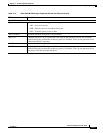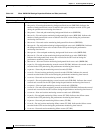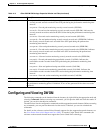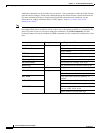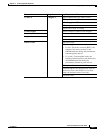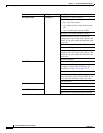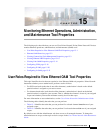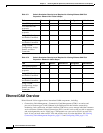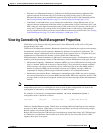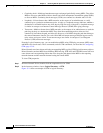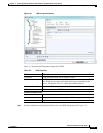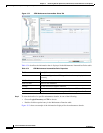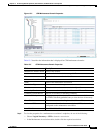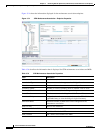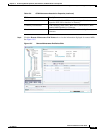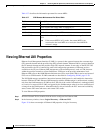
15-3
Cisco Prime Network 4.0 User Guide
OL-29343-01
Chapter 15 Monitoring Ethernet Operations, Administration, and Maintenance Tool Properties
Viewing Connectivity Fault Management Properties
• Ethernet Local Management Interface—Ethernet Local Management Interface (Ethernet LMI)
operates between the customer edge (CE) and the user-facing provider edge (U-PE) devices.
Ethernet LMI allows you to automatically provision CEs based on EVCs and bandwidth profiles.
See Viewing Ethernet LMI Properties, page 15-10 and Configuring E-LMI, page 15-20.
• Link OAM—Link OAM allows you to monitor and troubleshoot a single Ethernet link. It is an
optional sublayer implemented in the Data Link Layer between the Logical Link Control (LLC) and
MAC sublayers of the Open Systems Interconnect (OSI) model. You can monitor a link for critical
events and, if needed, put a remote device into loopback mode for link testing. Link OAM also
discovers unidirectional links, which are created when one transmission direction fails. See Viewing
Link OAM Properties, page 15-14 and Configuring L-OAM, page 15-21.
Viewing Connectivity Fault Management Properties
CFM allows you to discover and verify end-to-end, Carrier Ethernet PE-to-PE or CE-to-CE paths
through bridges and LANs.
CFM consists of maintenance domains. Maintenance domains are administrative regions used to manage
and administer specific network segments. Maintenance domains are organized in a hierarchy. The
administrator assigns a maintenance level to the domain from 0 (lowest level) to 7 (highest level); the
maintenance level determines the domain’s position within the CFM hierarchy.
CFM maintenance domain boundaries are indicated by maintenance points. A maintenance point is an
interface point that participates within a CFM maintenance domain. Maintenance point types include:
• Maintenance Endpoints—Maintenance endpoints (MEPs) are active CFM elements residing at the
edge of a domain. MEPs can be inward or outward facing. They periodically transmit continuity
check messages and expect to periodically receive similar messages from other MEPs within a
domain. If requested, MEPs can also transmit traceroute and loopback messages. MEPs are
responsible for keeping CFM messages within the boundaries of a maintenance domain.
• Maintenance Intermediate Points—Maintenance intermediate points (MIPs) are passive elements
that catalog information received from MEPs and other MIPs. MIPs only respond to specific CFM
messages such as traceroute and loopback, and they forward those messages within the maintenance
domain.
Note Prime Network Vision does not display information for CFM maintenance endpoints or maintenance
intermediate points for Cisco Viking devices if errors exist in their configurations. An error in the
configuration is indicated by an exclamation point (!) in the CLI output.
For example, if you enter the command
show ethernet cfm local maintenance-points, a
configuration error is indicated as follows:
cfm_d100/2 cfm_s100 Te0/2/0/3.110 Up MEP 2100 eb:7a:53!
CFM uses standard Ethernet frames. CFM frames are distinguishable by EtherType and for multicast
messages, by MAC address. CFM frames are sourced, terminated, processed, and relayed by bridges.
Routers support only limited CFM functions.
Bridges that cannot interpret CFM messages forward them as normal data frames. All CFM messages
are confined to a maintenance domain and to an S-VLAN (PE-VLAN or Provider-VLAN). CFM
supports three types of messages:



